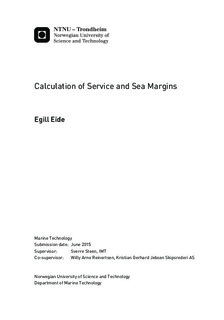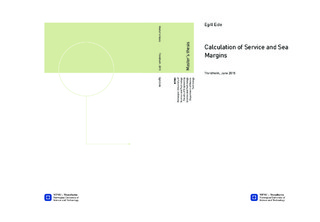| dc.description.abstract | In this thesis two tankers owned by Kristian Gerhard Jebsen Skipsrederi (KGJS) were investigated. A method of calculating service and sea margins for different speeds has been developed. When a ship is in normal operation, the additional power required to reach a certain speed will be higher than the predicted and measured on the delivery sea trial. This increase due to wind, waves and fouling is usually expressed as a sea margin. Typical values are 15-20\% of the power required in ideal conditions.
The model in this thesis used noon reports provided by KGJS for the two ships. These are daily reports of fuel consumption, speed and weather conditions. For each report the added power due to waves, wind and roughness were calculated. The change in propeller efficiency due to the added resistance was calculated and the calm water power requirement was corrected for changes in draft. The calm water speed-power relation for the ships did not cover the whole speed range typical for the ships. Therefore the relation was extrapolated to also cover the lower speeds.
The results indicate that the total sea margin and the wave part of the margin both decrease with speed. The wind part of the sea margin seems to be negligible on average. The fouling part of the margin was modeled as roughness according to theory. This results in a constant fouling margin independent of speed of 15-20\%. This was an underestimation for the lower speeds, which could indicate that the calm water speed-power relationship was underestimated for the lower speeds where model test data was not available and the relationship was estimated.
Approximate formulas were developed for calculating the different margins. The total sea margin and the wave margin are inversely proportional to the ship speed. The wind margin seems to be negligible. | |

